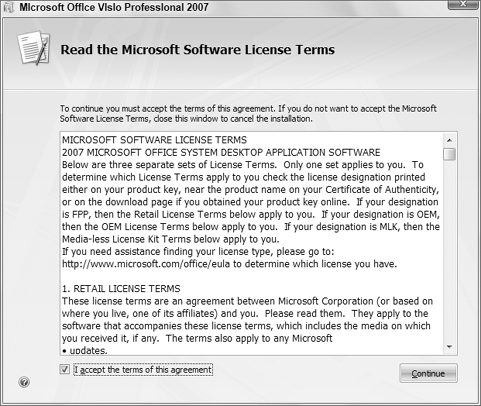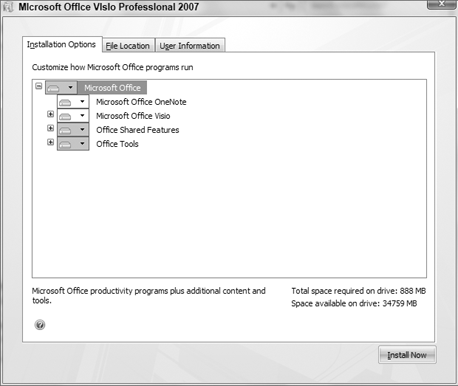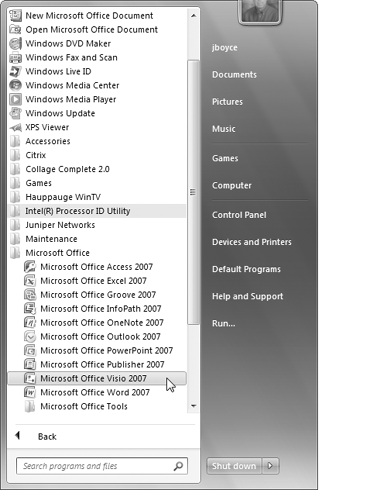7. Type of Installation
Sometimes you'll be given some choices as to how and where you want to install the program. Figure 5
shows an example from Microsoft Office Visio Professional 2007. Unless
your computer is low on disk space, it's generally a good idea to
install the program with all features. Otherwise, months later you may
go to use some advanced feature of the program only to get an error
message saying it's not installed. A nice compromise in Microsoft
Office Setup is to choose the Installed on First Use option for a
feature, which causes Setup to run when you try to use a feature that
is not yet installed. Then, you just pop in the CD or DVD, let Setup
install the feature, and continue working.

As to the "where" to install the program, there is
rarely any reason to change the suggested location. That will typically
be some folder in C:\Program Files. Don't change that unless
you really have some good reason for doing it. Whatever you do, don't
make the common newbie mistake of installing it in your Documents
folder or someplace like that. You're not installing a document. You're
installing a program. And it's best to keep all your programs in
subfolders under C:\Program Files.
8. Installation summary
The installation procedure might give you a summary
of the options you chose along the way. Typically you'll have a Back
button or some other means to back up and make changes if needed.
9. Setup completed
The last page of the installation options might offer a couple of final options, like in the example shown in Figure 6.
Whether or not you choose these options is relatively unimportant. You
can check the Web for updates and additional downloads at any time,
whether through the program itself or by visiting the software
company's Web site (or the Microsoft Update site).
Some applications give you the option of keeping
installation files on the computer rather than deleting them. Keeping
the installation files can make it easier to change program settings or
install missing components in the future. They usually don't take up
any significant amount of disk space. Click Finish, remove the CD from
the drive, and put it someplace safe in case you ever need to reinstall
in the future.



NOTE
Most insurance policies don't cover computer
software. So if at all possible, consider keeping your original program
CDs in a fireproof safe.
10. Using the installed program
Once the program is installed, you can run
it from the Start menu. In the preceding steps, I installed Microsoft
Office Visio Professional 2007. So to run it, I'd click the Start
button, then click the Visio item as shown in Figure 7. Or, I can choose All Programs => Microsoft Office, then click Microsoft Office Visio 2007.